The stock market has turned volatile, and the income stock sectors feel downright unwelcoming. Since I have contact with thousands of investors I learn there are a thousand different situations in the market. The investor who bought at a higher price doesn’t like to see the share price drops in his portfolio. Another is expecting a cash infusion next week and hopes prices will stay down until she gets the money and can load up on shares at the current low prices.
I tell my Dividend Hunter readers that you can’t earn dividends unless you own shares of dividend paying stocks. Trying to time the market can leave an investor without any shares that are paying dividends. It takes a somewhat different mindset to get away from worrying about share prices and to focus on building an income stream. The good part is that when the stock market corrects, or becomes volatile, or forgets which way is up, the income investor will continue to rake in dividends. In a choppy market I like to add to those stocks that hit my “sweet spot” combination of current yield and dividend growth.
In a flat or volatile market, cash dividends are real returns, so a higher yield can be viewed as a cushion against share price movement. Dividend growth is a factor that can make a stock more attractive even if the market is not in a price appreciation mode. You can find dividend stocks with low yields, such as 3% or less and double digit annual dividend growth. At the other end of the spectrum are the 10% yield stocks, but with little potential for dividend growth.
If total stock market returns go flat, I recommend going for the middle ground. Find stocks with attractive yields. I the current market the range would be 5% to 7%. These stocks need to have recent history and prospects of mid to high single digit dividend growth. The dividend payments give you solid cash returns, and the dividend growth prospects can give support to share prices in a volatile market. In the long run, this combination should produce total annual returns in the low double digits.
Here are three stocks that fit the criteria discussed above:
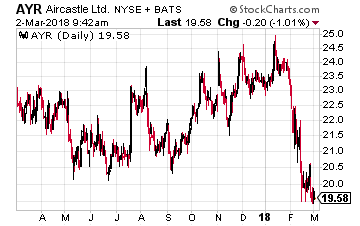 Aircastle Limited (NYSE: AYR) owns approximately 220 commercial aircraft that are leased to 81 airlines around the world. Aircastle must be nimble to adjust for changing needs for aircraft type and client airlines financial conditions. For example, in 2017, Aircastle purchased 68 aircraft and sold 37. The business is very profitable. The company generated a 15% return on equity last year and reported adjusted net income of $2.15 per share.
Aircastle Limited (NYSE: AYR) owns approximately 220 commercial aircraft that are leased to 81 airlines around the world. Aircastle must be nimble to adjust for changing needs for aircraft type and client airlines financial conditions. For example, in 2017, Aircastle purchased 68 aircraft and sold 37. The business is very profitable. The company generated a 15% return on equity last year and reported adjusted net income of $2.15 per share.
The current dividend rate of $1.12 per share per year is well covered by net income and free cash flow. In recent years, Aircastle has been increasing the quarterly dividend by 7% to 8% per year. The foundation of Aircastle’ s results is the steady growth in international air traffic, which appears to be immune to global economic conditions. The shares currently yield 5.75%.
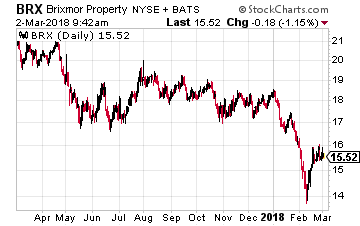 Brixmor Property Group Inc (NYSE: BRX) is a real estate investment trust (REIT) that owns community and neighborhood strip malls. These malls are typically anchored by a grocery store and the tenants are often in businesses that are largely immune from ecommerce sales competition, or in recent terminology, “being Amazoned”.
Brixmor Property Group Inc (NYSE: BRX) is a real estate investment trust (REIT) that owns community and neighborhood strip malls. These malls are typically anchored by a grocery store and the tenants are often in businesses that are largely immune from ecommerce sales competition, or in recent terminology, “being Amazoned”.
The company’s board of directors recently shook up the management team, with the goal of more active rental rate management. The REIT’s major tenants are financially strong, but there is a group of weaker tenants with absurdly low rental rates. Replacing these tenants will allow Brixmor to grow revenue and free cash flow. The company should be able to continue its recent history of 5% to 6% dividend growth. The BRX shares yield 7.1%.
Related: Buy This Stock Paying 15% That’s Better Than Paying 20%
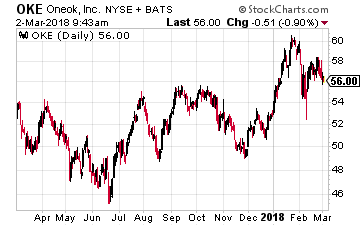 ONEOK, Inc. (NYSE: OKE) is an energy sector infrastructure services company. ONEOK (pronounced “one-oak”) focuses on natural gas and natural gas liquids, also called NGLs. The company provides gas gathering services in the energy plays, facilities to process NGLs into the different components like ethane and propane, and interstate pipelines to transport natural gas and NGLs to their demand centers.
ONEOK, Inc. (NYSE: OKE) is an energy sector infrastructure services company. ONEOK (pronounced “one-oak”) focuses on natural gas and natural gas liquids, also called NGLs. The company provides gas gathering services in the energy plays, facilities to process NGLs into the different components like ethane and propane, and interstate pipelines to transport natural gas and NGLs to their demand centers.
The growth in gas production has been lost in the news about the U.S. becoming the world’s largest crude oil producer. Oil wells also produce natural gas and NGLs. ONEOK is the primary, and often the only, company gathering and processing gas in the major crude oil plays.
The company expects to grow its dividend by 8% to 10% per year. OKE currently yields 5.5%.
Source: Investors Alley
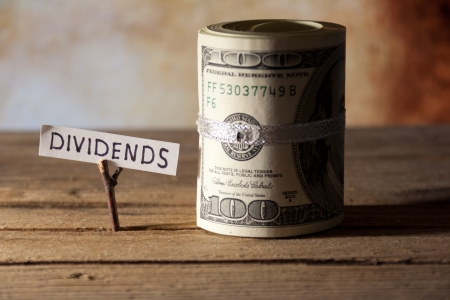
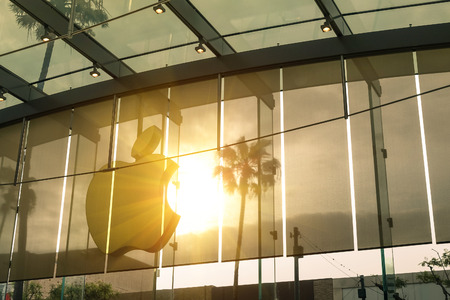
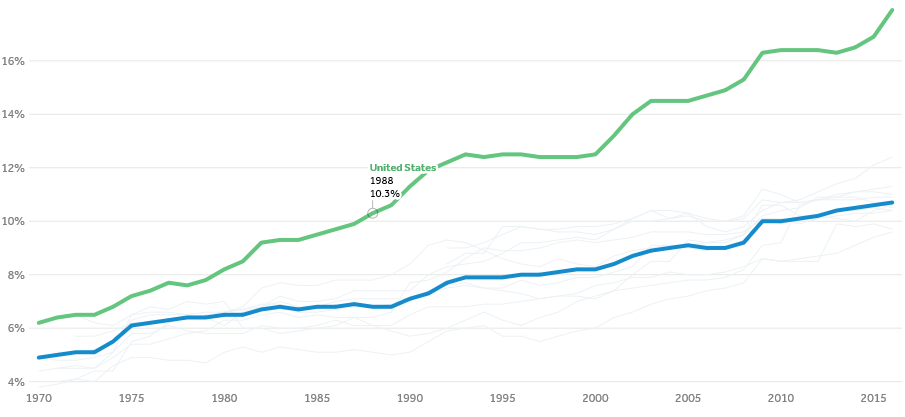
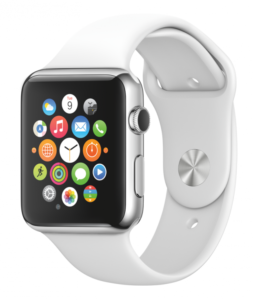 Today, Apple is working with Stanford University on a study to see if the Apple Watch’s sensors can detect heart abnormalities. Apple is also working on a number of other health-related solutions, usually using the Apple Watch, such as non-invasive blood glucose monitoring.
Today, Apple is working with Stanford University on a study to see if the Apple Watch’s sensors can detect heart abnormalities. Apple is also working on a number of other health-related solutions, usually using the Apple Watch, such as non-invasive blood glucose monitoring.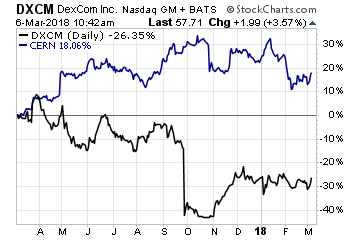 Apple has also teamed up with several medical device makers to create iPhone-enabled devices, including Dexcom (Nasdaq: DXCM) for glucose monitoring and Cochlear (OTC: CHEOY) for hearing aids. As software becomes more and more important for medical device companies going forward, Apple could be positioning itself as an analytics, software, and patient health platform for these companies to plug into rather than having to build these capabilities themselves.
Apple has also teamed up with several medical device makers to create iPhone-enabled devices, including Dexcom (Nasdaq: DXCM) for glucose monitoring and Cochlear (OTC: CHEOY) for hearing aids. As software becomes more and more important for medical device companies going forward, Apple could be positioning itself as an analytics, software, and patient health platform for these companies to plug into rather than having to build these capabilities themselves.